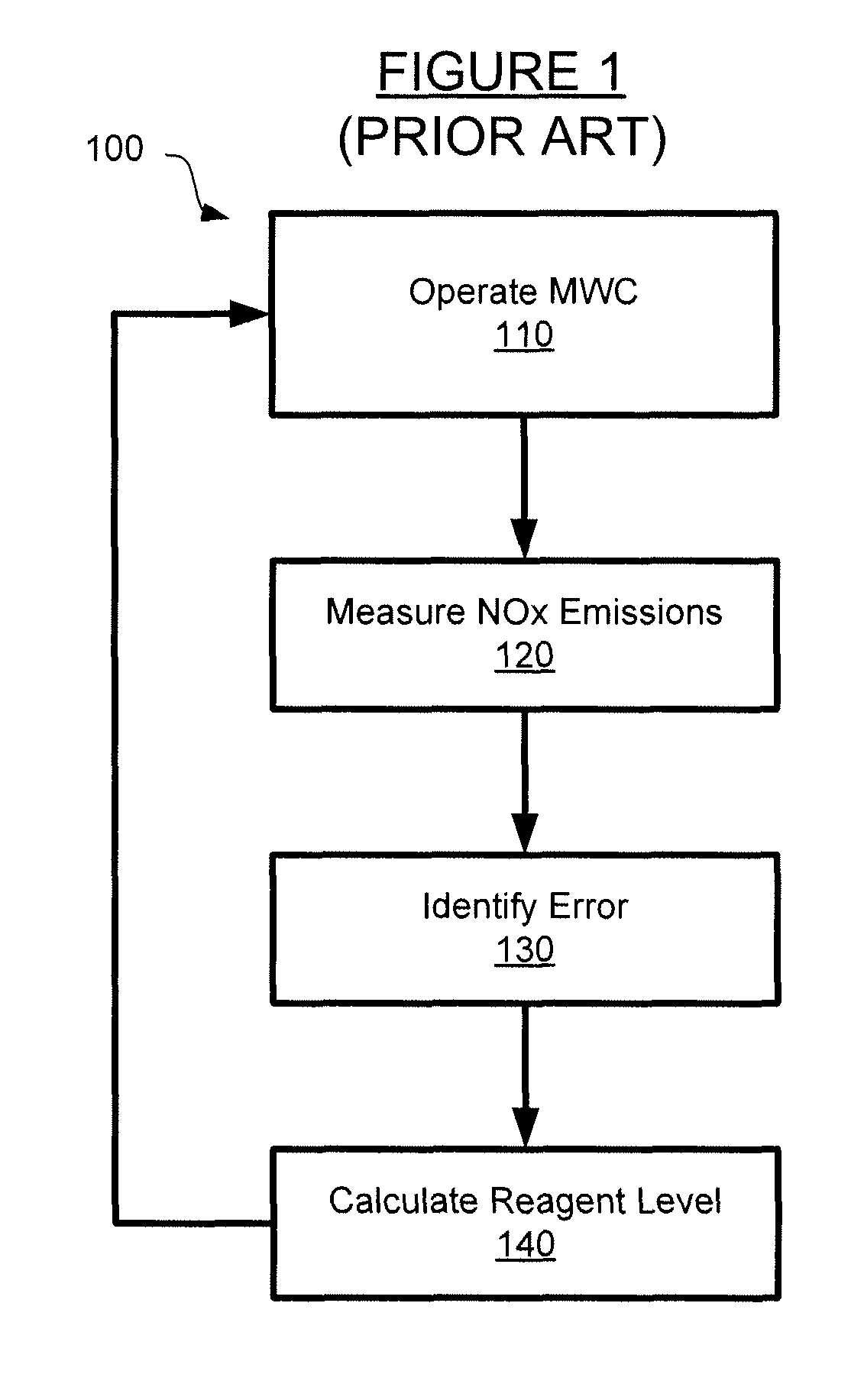Dynamic control of selective non-catalytic reduction system for semi-batch-fed stoker-based municipal solid waste combustion
a non-catalytic reduction and control system technology, applied in the direction of machines/engines, separation processes, mechanical equipment, etc., can solve the problems of nox emissions that are generally undesirable, worsen potentially fatal respiratory diseases, and are susceptible to adverse effects, so as to improve the ammonia flow, accurate predict current furnace nox levels, and eliminate the delay inherent in the nox measurement device
- Summary
- Abstract
- Description
- Claims
- Application Information
AI Technical Summary
Benefits of technology
Problems solved by technology
Method used
Image
Examples
Embodiment Construction
[0034]As depicted in the figures and as described herein, the present invention provides an improved method and system for controlling selective non-catalytic reduction (SNCR) systems in municipal waste combustors (MWCs) to reduce both Nitrogen Oxides (NOx) emissions and ammonia slip.
[0035]Turning now to FIG. 1, a known method 100 for controlling SNCR systems is described. In the known SNCR control method 100, a MWC facility is operated in step 110. The stack NOx emissions from the MWC over one or more periods is then measured in step 120. In step 130, a proportional-integral-derivative (PID) controller is used to identify the error between the measured NOx emissions level and a desired setpoint. As known in the art, the PID controller calculation involves three separate parameters: the Proportional, the Integral and Derivative values. The weighted sum of these three parameters is used to adjust the process via a control element. Then, in step 140, a corrective reagent level (i.e., ...
PUM
| Property | Measurement | Unit |
|---|---|---|
| temperatures | aaaaa | aaaaa |
| flame temperatures | aaaaa | aaaaa |
| temperature | aaaaa | aaaaa |
Abstract
Description
Claims
Application Information
 Login to View More
Login to View More - R&D
- Intellectual Property
- Life Sciences
- Materials
- Tech Scout
- Unparalleled Data Quality
- Higher Quality Content
- 60% Fewer Hallucinations
Browse by: Latest US Patents, China's latest patents, Technical Efficacy Thesaurus, Application Domain, Technology Topic, Popular Technical Reports.
© 2025 PatSnap. All rights reserved.Legal|Privacy policy|Modern Slavery Act Transparency Statement|Sitemap|About US| Contact US: help@patsnap.com



